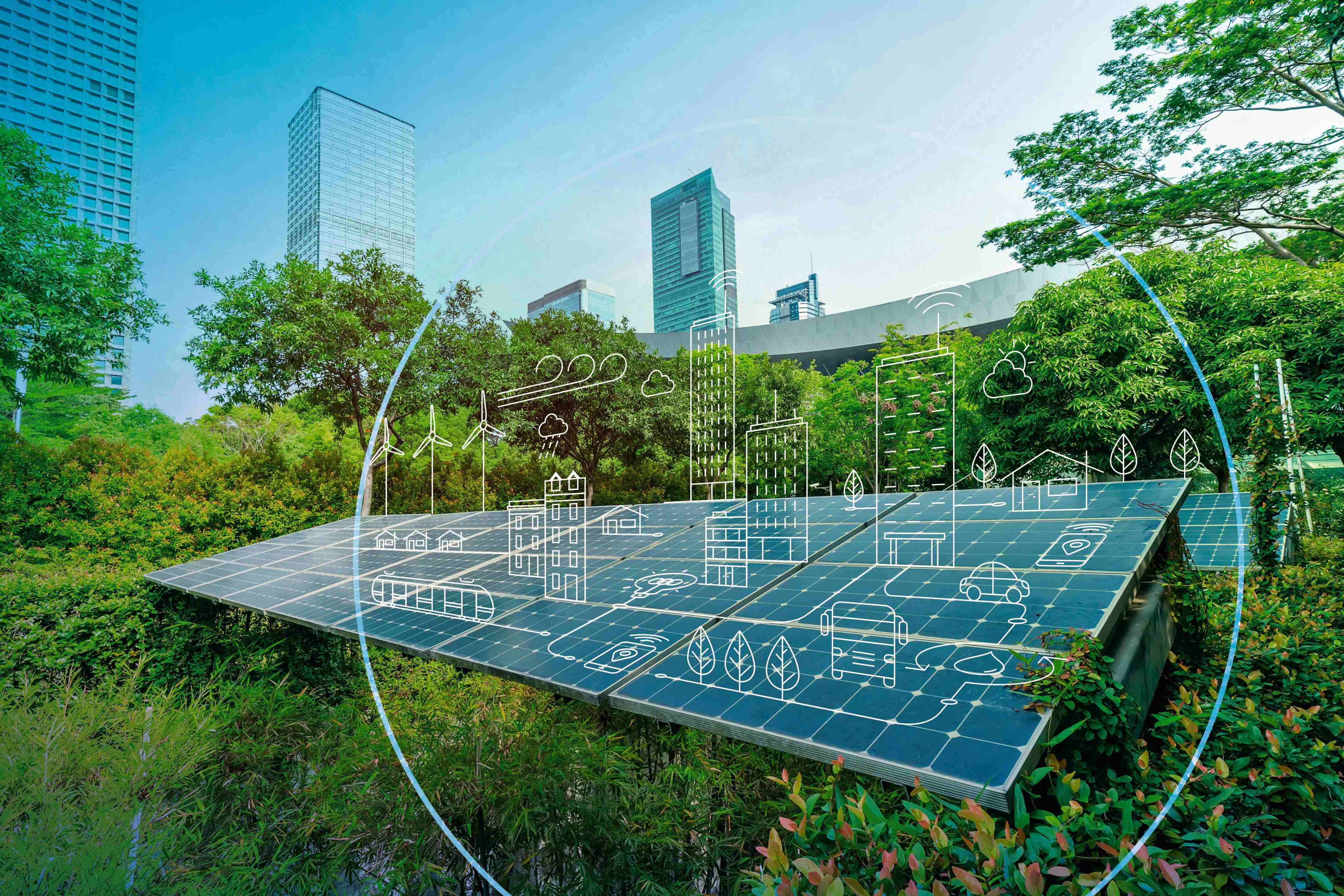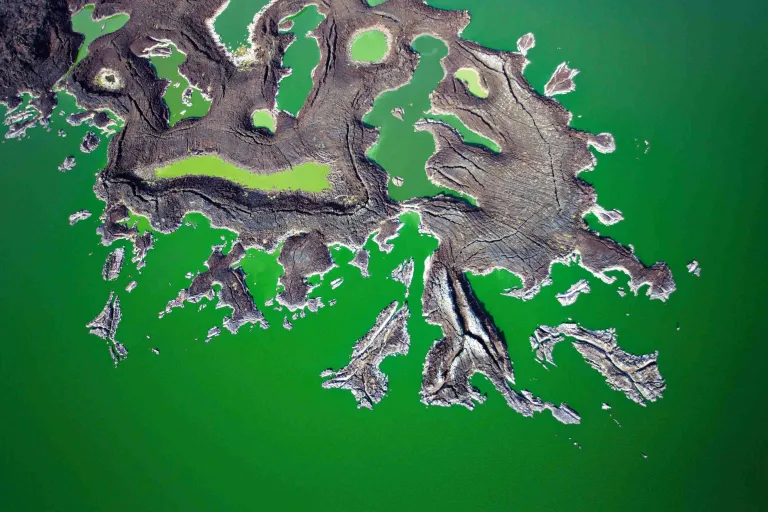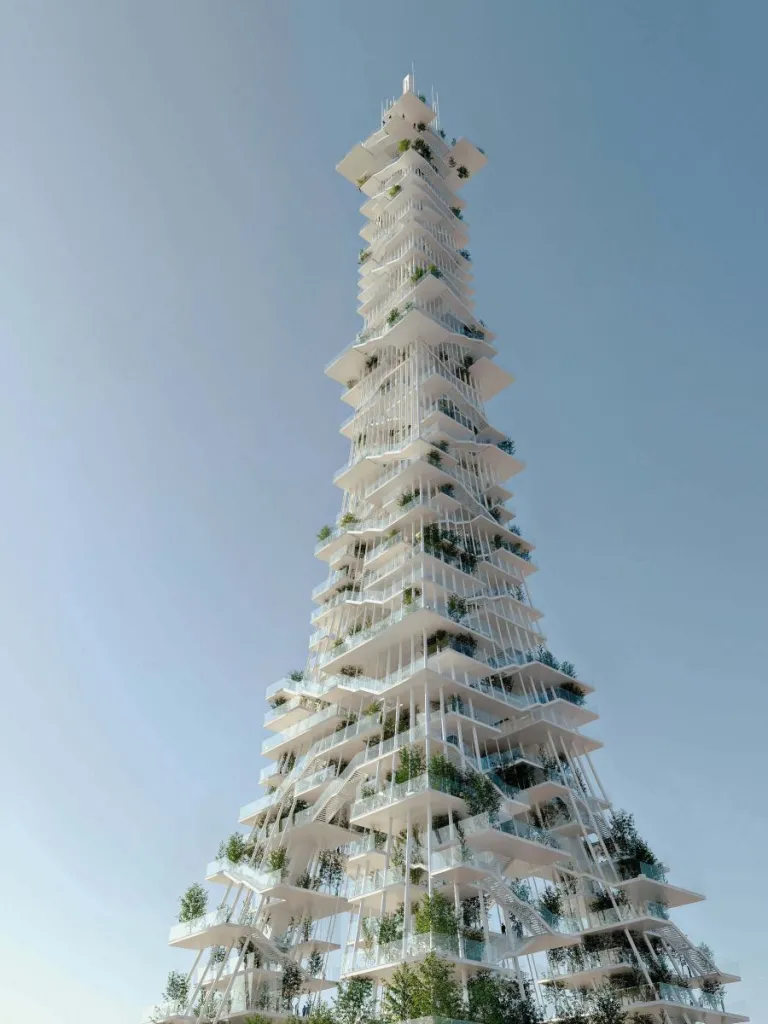Collaborative urban planning
Virtual twin experiences empower stakeholders shaping the world’s cities – from construction firms to urban leaders – to explore unlimited scenarios to optimize human experience and protect our planet. And because the twins are built on scientific principals and data, the most sustainable actions can be taken in service of and in consultation with everyday citizens: from optimizing the layout of a single building to determining the best routes for public transportation.
UNTiL NOW
Decisions about cities and infrastructure were made by officials alone
FROM NOW ON
Public servants can rely on a more collaborative approach to urban planning
Building smart, sustainable cities with virtual twins
From protecting a heritage site to rebuilding a war-torn region, planners are relying on the rich data and powerful visualizations of virtual twins to guide their decisions.
Adapting infrastructure for climate change
How can you prepare an ancient city for future climate issues while preserving a historic world heritage site? That was the dilemma facing local government leaders in Egypt as they recognized the urgent need to address the dual problems of air pollution and heat islands in millennial-old Cairo. As part of a joint initiative with SUEZ-ARIA, EGIS and ATOS, our 3DEXPERIENCE platform will be used to create a virtual twin of the city's downtown that acts as an observatory of local climate change.
Because it's rooted in science, the dynamic, continuously evolving virtual twin will provide precise data down to street level. This rich information will empower officials to create safe and enjoyable public spaces, with special attention to neighborhoods around schools and hospitals. Detecting heat islands, for example, can help determine the optimal urban environment for green spaces - as specific as recommending the ideal species of trees to plant.
In the coming years, public servants around the world will face increasing pressure to fight greenhouse gas emissions; cities represent more than two-thirds of the global impact despite occupying just 3% of land area. Through projects like Cairo's, however, virtual twin technology can reveal how to adapt existing infrastructure to address climate change challenges, while still taking into account the need to preserve global heritage.
Rebuilding a war-torn country
Officials in Ukraine face a far different urban challenge: rebuilding areas ravaged by war to be even more inclusive than they were before. The Ukraine conflict has inflicted immense devastation to the country's population and territories. But Dassault Systèmes is dedicated to helping Ukraine rebuild and be more sustainable.
Along with Egis and B4, Dassault Systèmes is aiding Ukrainian authorities to prepare for the post-war era: imagining the future for the city of Chernihiv, including rebuilding its infrastructure and anticipating emerging climate and humanitarian issues.
The two-step process is kicking off by assessing damage using satellite data analyzed with AI. This information will be added to the 3DEXPERIENCE platform to enrich the virtual twin of Chernihiv. This data will be assessed and tested to optimize reconstruction - everything from design of new buildings to the organization of city transportation.
The 3DEXPERIENCE platform allows all stakeholders - including citizens - to collaboratively consider and test everything from flooding risks to accessibility, transportation, land use, position of key urban assets, and existing water, heat, sewage and other infrastructure networks. The goal is to build back better for all citizens of Ukraine, giving them safe, green and hospitable public spaces to enjoy within smart, sustainable cities.
The Infrastructure & Cities sector is now at a decisive turning point. I strongly believe that virtual twin experiences are key to support energy transition and decarbonization, overcome construction challenges, manage logistics disruptions and make cities resilient.
Virtual twins empower decision-making
Ensuring that construction and development projects are sustainable is one of the biggest challenges facing infrastructure planners. From generating power to protecting lakes, virtual twins inform responsible choices.
Studying climate change on lakes
The great lakes of Africa are particularly sensitive to climate change. Understanding how these bodies of water function is key to protecting their future. But accurate measurements and other data are often sparse. La Fondation Dassault Systèmes in Europe is supporting the Virtual Lakes project led by the French National Center for Scientific Research (CNRS).
Starting with Lake Turkana, the project team is developing a 3D simulation model that is specific to lakes to simulate sedimentation hydrodynamics and conditions such as rapidly varying water levels, shoreline migration, deltas and water quality then present their research in realistic 3D visualizations.
The first goal is to use these !earnings to better preserve the future of lakes in arid and semi-arid zones around the world, and then adapt them to better anticipate the effects of climate change on lakes and their environments in terms of biodiversity, economics and ecology.
Developing a first-of-its-kind fusion energy plant
High hopes are directed at fusion as a promising long-term and sustainable energy supply. The UK Atomic Energy Authority (UKAEA) aims to deliver a prototype fusion energy plant and make it commercially viable by 2040. Over the next two years, the Spherical Tokamak for Energy Production project (STEP) will involve dozens of supply chain partners to meet the concept design requirements. Our 3DEXPERIENCE platform will help manage all plant and reactor assets during the concept design phase. Ultimately, STEP will be a major operational power station - the first ever Spherical Tokamak plant of this scale delivering energy to the grid. The platform will be able to grow with the program as it moves through detailed design, construction and ultimately into plant operations. The hope is for STEP to drive economic growth and high-tech jobs in the UK, helping to develop skilled people for the industry to thrive.
Building Tomorrow
How can we reimagine a building of yesterday with technologies of today?
In the context of climate change, resource depletion and the rapid growth of cities, it's clear that Infrastructure & Cities should be built to last for decades, if not centuries. Digital solutions and technical capabilities hold tremendous potential to make development more sustainable and mitigate impacts inherent in building physical structures. And with the urgent need to decarbonize our planet, we at Dassault Systèmes know the time to act is now.
To demonstrate the breadth of positive impact that can be gained by embracing sustainable development measures, we gathered a global team of experts to reimagine how one of the world's most famous landmarks could be created today. And so we asked: how could the Eiffel Tower be built now rather than how it was erected in 1887?
Through the "Building Tomorrow" project, the group reimagined every aspect in the building process to identify opportunities for improvement, from cleaner energy consumption to circular economy practices. They considered how public authorities, engineers, architects, logistics experts and builders could approach challenges across the value chain using virtual twin technology. They ultimately discovered and demonstrated how innovative ways of thinking and working can guide the way forward towards a more sustainable tomorrow.





